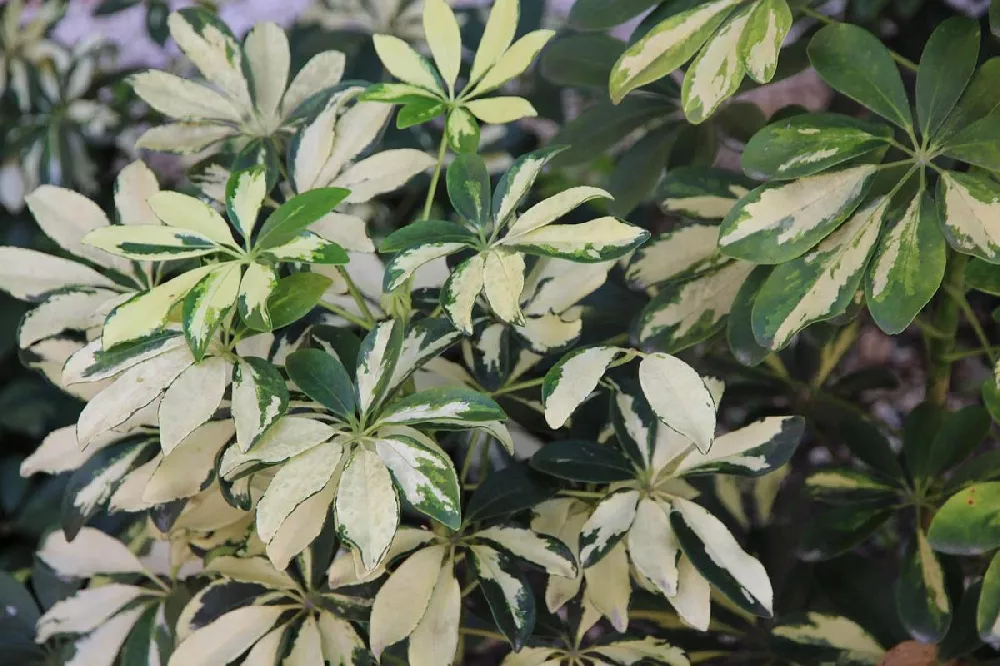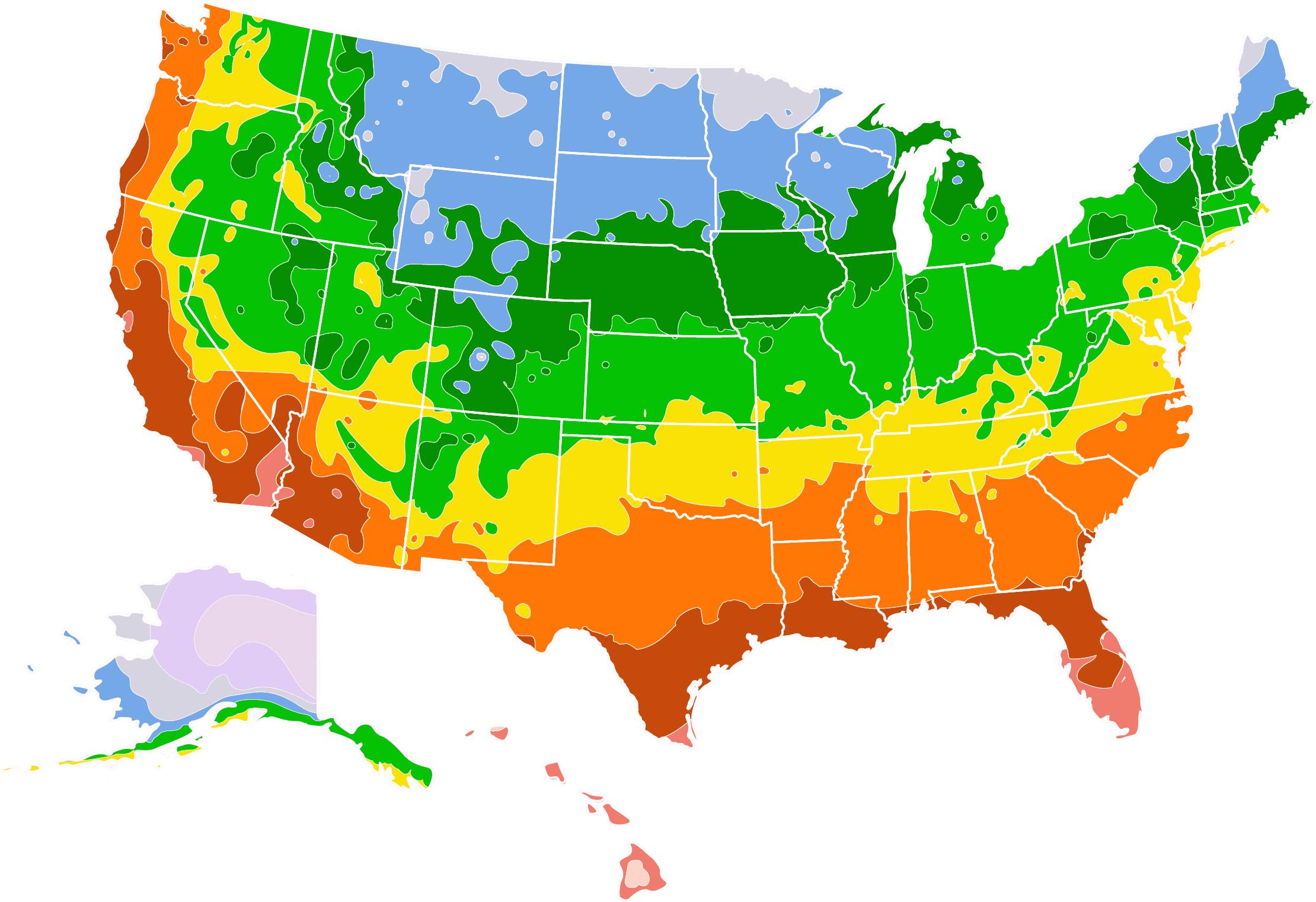- Home >
- Houseplants >
- Variegated Dwarf Umbrella Tree
Variegated Dwarf Umbrella Tree for Sale - Buying & Growing Guide
- Ships in 1-2 days
- 1-Year Warranty Eligible
- Pots or accessories are not included unless specified in the product options.
Shipping Details:
Once your order is shipped, you’ll receive an email with a tracking number and estimated delivery date. Most orders ship immediately, but some items are seasonal and may only ship in spring or fall. These products are noted on the website.
The beautiful foliage of a variegated dwarf umbrella tree is sure to catch the eye of anyone who visits your home or garden. Those leaves form a unique, symmetrical umbrella shape and have two-toned variegation consisting of green- and cream-colored splotches. This cultivar, known botanically as Schefflera arboricola 'Trinette,' is also an excellent plant to grow indoors in containers, as it is relatively small in stature, even when mature. This plant also needs less light than many other houseplants, with four hours of indirect light being enough to keep it alive.
- The variegated dwarf umbrella tree has beautiful two-toned leaves.
- It survives in lower light settings.
- Its foliage grows in an interesting pattern, resembling an umbrella.
Plant Care
Sunlight

About four hours of indirect sunlight per day is ideal.
Watering
Monitor the soil moisture, and water your dwarf umbrella tree when the first few inches have become dry to the touch.
Fertilizing

The variegated dwarf umbrella tree often survives without fertilizer, but it will perform better with monthly feedings.
Planting and Care
Planting instructions
Since you’ll likely need to grow your variegated dwarf umbrella tree indoors for at least part of the year, you’ll need to take time to find the best growing location in your home. The ideal area for one of these plants receives about four hours of indirect light per day. You should also take time to choose a suitable soil type for your variegated dwarf umbrella tree. Typically, these plants perform best in soil that drains well, including sandy soils. The container you use should also allow for excellent drainage to ensure this plant does not get waterlogged.
Watering and nutrients
While some plants will respond well to a pre-set watering frequency, variegated dwarf umbrella trees are a bit different. Rather than choosing to water daily, weekly, or monthly, you should water your plant based on the dryness of the soil. When you notice the first 2 inches or so of soil have become dry, it’s time to add water. Variegated dwarf umbrella trees may also survive in the absence of fertilization. However, with monthly feedings of a balanced fertilizer, this tree will exhibit more vigorous growth.
Pollination
When growing a variegated dwarf umbrella tree, you should not worry about pollination. The primary reason that gardeners grow this cultivated species is to enjoy the impressive leaves that it holds. Variegated dwarf umbrella trees do not produce fruits that people like to eat, which is why you won’t need to spend time trying to pollinate any flowers that may appear on this plant. Instead, you can simply enjoy the appearance of this plant rather than facilitating a healthy harvest.
Pruning
The best time to prune a variegated dwarf umbrella tree is during the late winter, just prior to the plant entering its active growing phase. When pruning, you should use tools that are both sharp and completely sterile to ensure clean cuts and reduce the spread of disease. Prune your variegated dwarf umbrella tree to remove any stems or leaves that show signs of disease or damage. This plant allows its older leaves to die. When this occurs, you should remove those spent leaves with your pruning cuts.
Pests, diseases, and animals
There are a few pests that can attack your variegated dwarf umbrella tree and threaten its health. Most of these pests are common garden insects, including aphids and mites. Occasionally, a variegated dwarf umbrella tree may also experience buildups of mold and mildew. However, most of the complications you experience when growing one of these plants will be the result of improper care, including incorrect watering and light exposure, rather than being due to an infection or infestation.
Achieving maximum results
Variegated dwarf umbrella trees prefer to live in places that have a relatively warm air temperature. Often, 60 degrees Fahrenheit represents the lowest temperature this plant can tolerate. When growing this plant, 70 degrees Fahrenheit is often a better level at which to set your thermostat. When the air temperature drops too low for a variegated dwarf umbrella tree, you’ll notice the signs right away, which often include leaf drops. Misting is also an important maintenance task to ensure this plant receives the humidity it enjoys.
FAQs
How large does a variegated dwarf umbrella tree grow?
Can you grow a variegated dwarf umbrella tree outdoors?
It's possible to grow a variegated dwarf umbrella tree outdoors, but you must live in a climate that remains warm year-round if you wish to do so. As soon as the temperature drops below 60 degrees Fahrenheit, you will notice your variegated dwarf umbrella tree beginning to decline. Only gardeners who live in hotter regions, including hardiness zones 11, 12, and hotter, have the opportunity to grow this plant outdoors all year. Everyone else in the United States will need to grow this plant indoors for part or all of the year.
Can you overwater a variegated dwarf umbrella tree?
A variegated dwarf umbrella tree will begin to decline if it receives too much or too little water. However, this plant is much more tolerant of dry conditions than overly wet ones. As such, you need to ensure that the soil and container you use to grow this plant both have excellent drainage. Without proper drainage, the soil may become waterlogged, which your variegated dwarf umbrella tree may struggle to overcome.
Compare Similar Products
You can't add more Product Name - Product size to the cart.
OK




